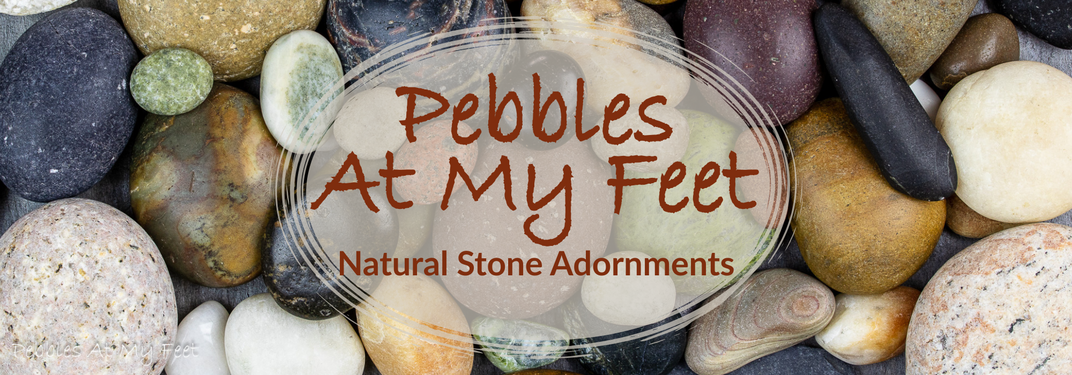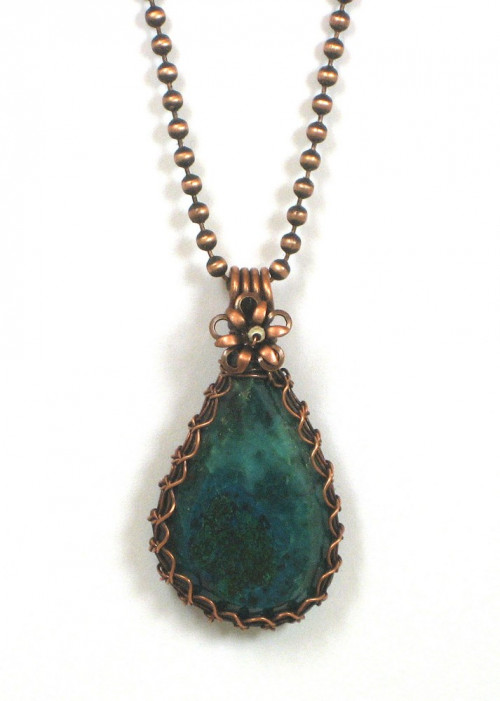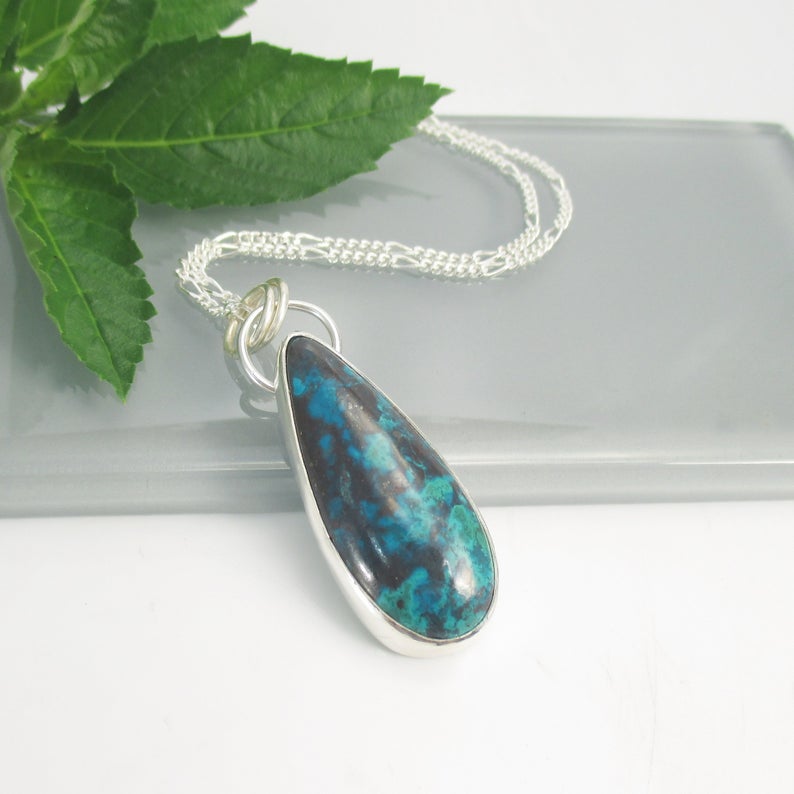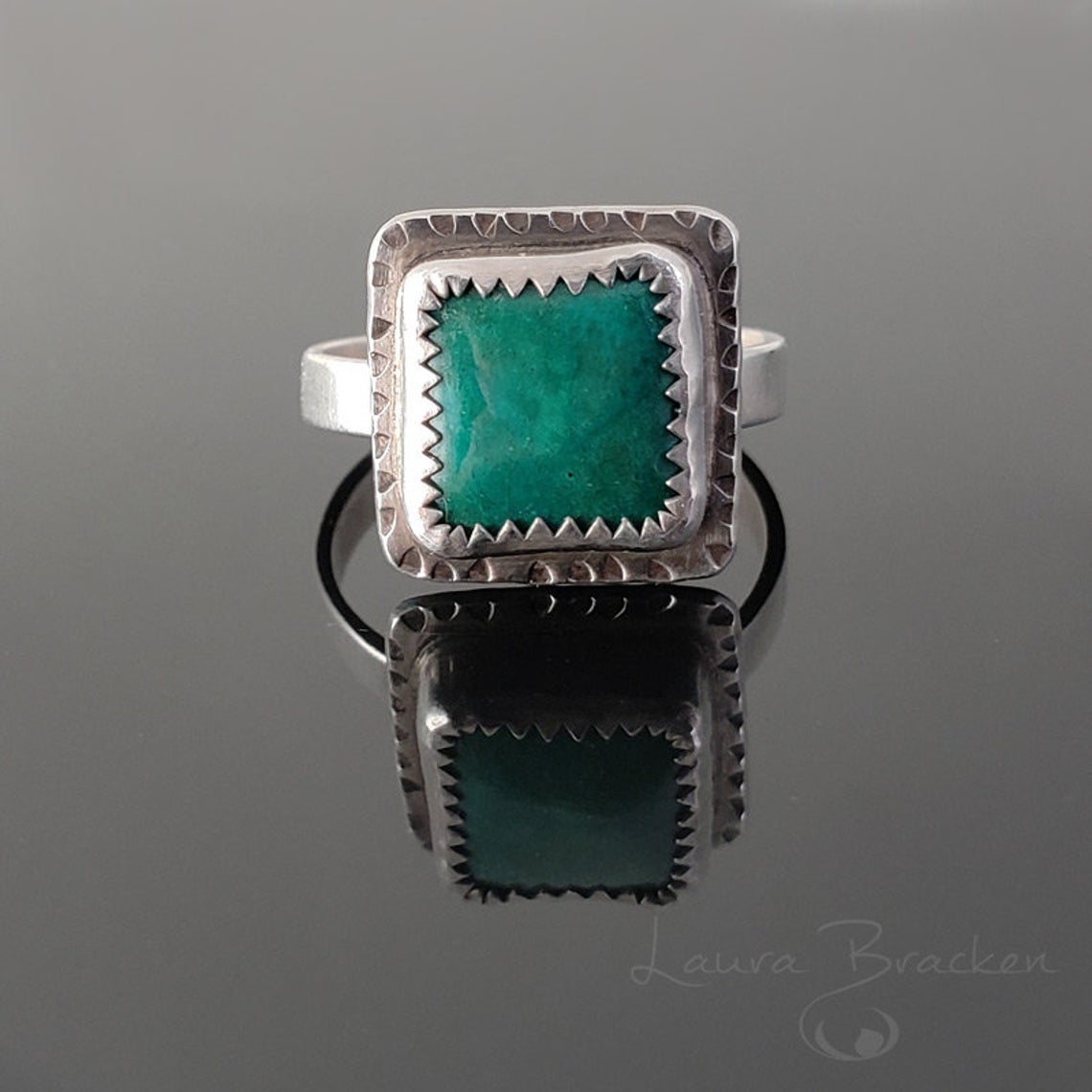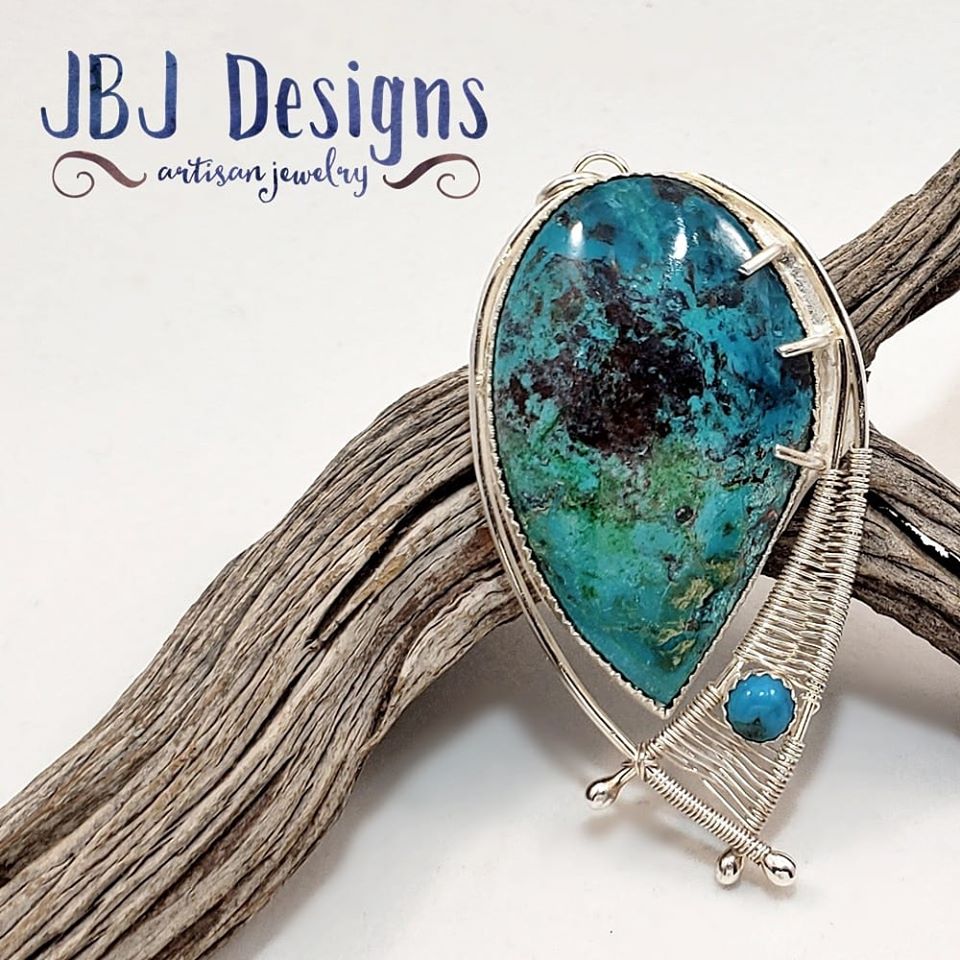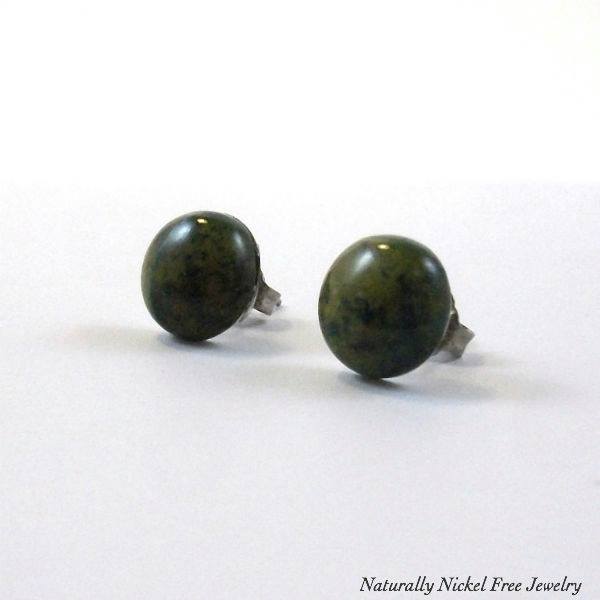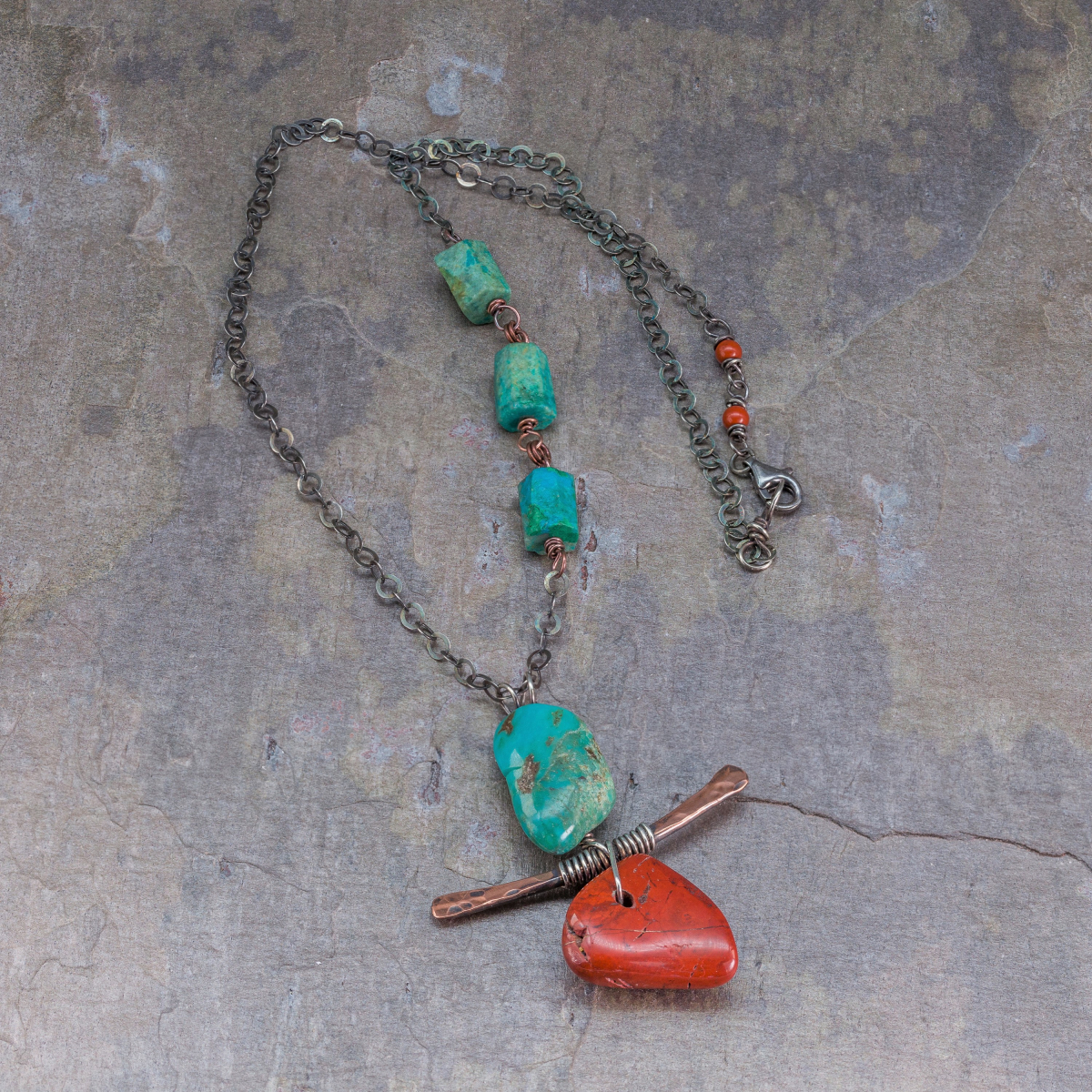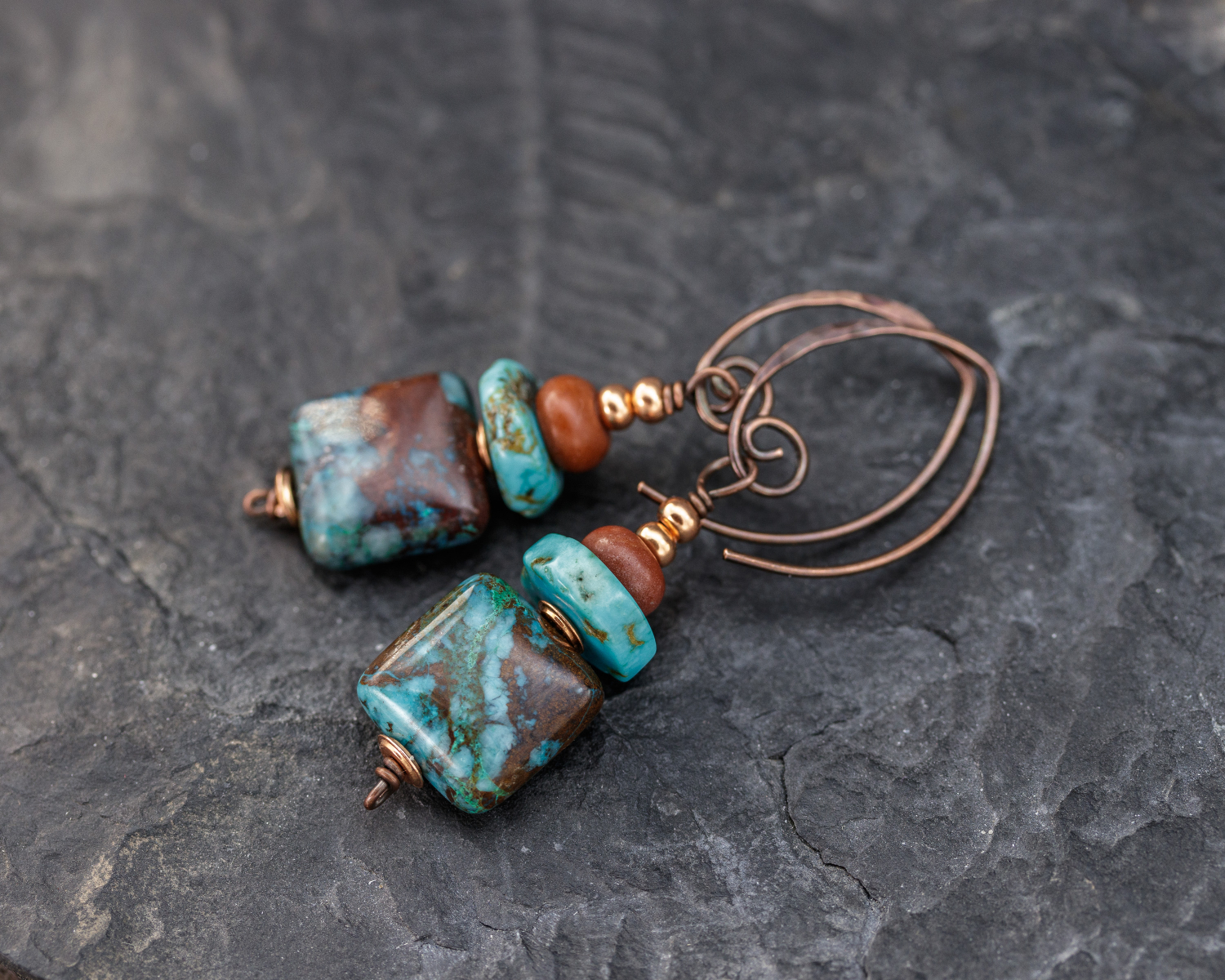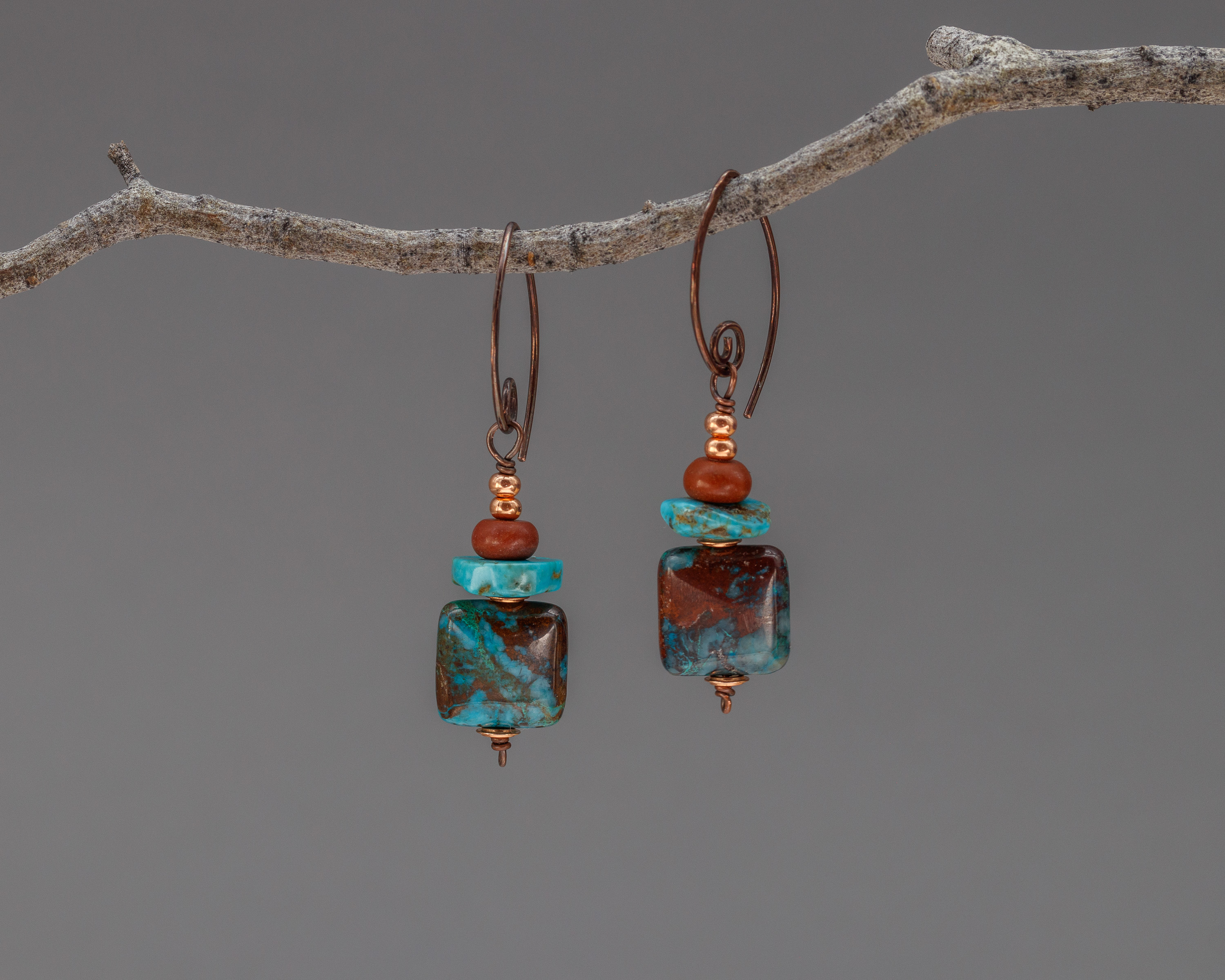
You’ve already read about my love of turquoise. There are some mineral “relatives” of turquoise that rank high in my book as well. One is chrysocolla. Chrysocolla is one of the copper containing minerals that are used as gemstones and as minor copper ores. It’s a “secondary mineral” of copper, like malachite and azurite. In this post, I’d like to share some mineralogical information about chrysocolla and showcase some of my jewelry and that of other makers with this beautiful, not-so-well-known gemstone.
Some of this post contains content I published over five years ago on my Artfire Blog. That blog might still be out there in the ether, but since I left the Artfire handmade marketplace in 2014, I’ve not maintained it. I think it’s worth re-introducing chrysocolla to my followers. It is lovely for itself but you might consider it a more affordable “alternative” for turquoise in handmade jewelry and so, be glad to know a little something about it.
The word chrysocolla comes from the Greek “chrysos” for gold and “kolla” for glue since chrysocolla and other copper-minerals were used to solder gold in the day. The name is often used to mean any large, globular, glassy blue to bluish green copper-bearing silicate not otherwise identified. It comes in colors ranging from blue, to bluish green, green, brown, yellow, and bluish black. It doesn’t have a crystal structure, and when pure is actually too soft to work as a gemstone. The chrysocolla used in stone beads and cabochons that you see in jewelry is “agatized” in chalcedony quartz or quartz. It is the quartz that allows chrysocolla to be polished so nicely. In fact, all of the chrysocolla that is worked into jewelry, to be precise, should be called chrysocolla-impregnated quartz.

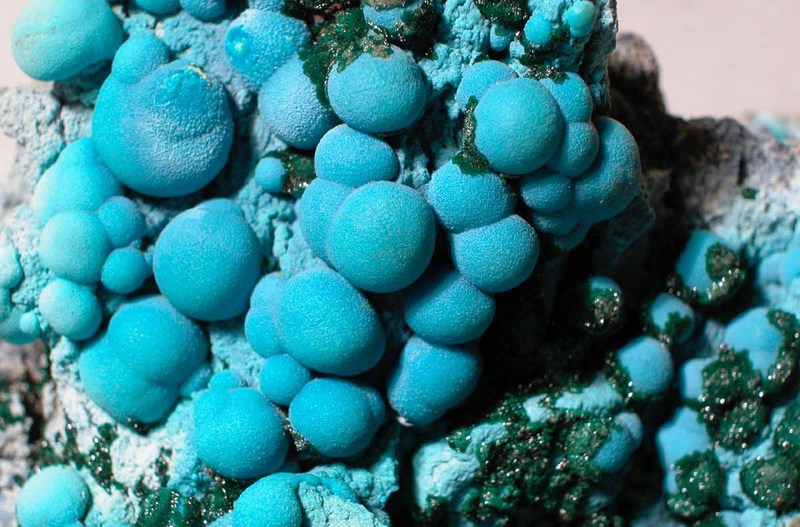
Photo at Left: Chrysocolla with Chalcedony coating from Inspiration Mine, Inspiration, Globe-Miami District, Gila Co., Arizona. Photo credit Robert Lavinsky iRocks.com Photo at right: Chrysocolla specimen from L'Etoile du Congo Mine (Star of the Congo Mine; Kalukuluku Mine) Photo credit www.mindat.org/min-1040.html
Chrysocolla is found around the world – wherever there are large copper deposits. Significant amounts are found in the Ural mountains of Russia, King Solomon’s mine in Israel, the Congo, Mexico, Chile, Queensland Australia, and in the USA in Arizona, New Mexico, and Utah.
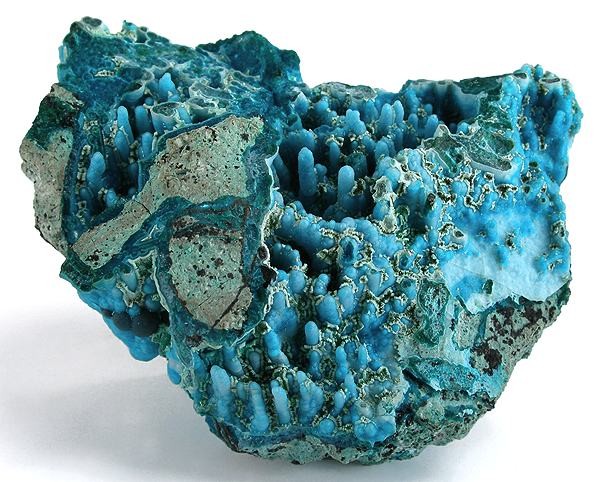
Chrysocolla, Ray Mine, Scott Mountain area, Mineral Creek District, Pinal County, Arizona, USA (From Wikipedia)
Chrysocolla is a mineral of secondary origin, commonly associated with other secondary copper minerals like azurite and malachite. What is a secondary mineral? I found it very interesting to research this a bit.
Primary minerals are formed from the volcanic (igneous) processes within the earth. Primary minerals of copper are the copper ores (mostly sulfides) that can be found in veins or ore bodies around the world and also native copper. Copper ores are found in volcanic basalts. But a rock that comes up from the earth’s core may not be stable in the same composition it has when molten. It might need to stay hot to keep itself together so to speak.
Nearer the earth’s surface it cools, and is subject to weathering and oxidation. Oxidation (think of it like the common rusting of iron) occurs wherever oxygen can penetrate rock or soils or through contact with water. Water, gases like oxygen (and others), and acids act on the minerals in the ground and sometimes substitute “something for something else” in the process. Copper sulfides get weathered to carbonates or silicates depending on the “something else” in the soil or rock around them.
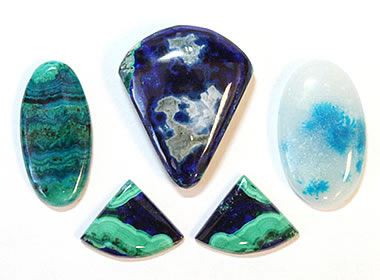
Secondary copper minerals: This photo shows several cabochons cut from Arizona mined copper minerals. They are an oval of chrysocolla and malachite on the left; three triangular cabs of azurite and malachite; and on the right, a quartz cabochon with chrysocolla inclusions. All materials were found in the Morenci area, a famous copper locality. Photo credit https://geology.com/gemstones/states/arizona.shtml#azurite
So, to understand that chrysocolla is a secondary mineral of copper, means it contains copper that started out either as native metallic copper or a primary ore (copper sulfide) in magma and after cooling and time, was weathered by water and oxygen and the minerals in the surrounding rock and soil to become a copper-containing rock with altered chemistry. Chrysocolla is a copper silicate and often has some aluminum in it; Azurite and malachite are variations of copper carbonates, all having lost their primary sulfur content to the weathering process. If only we all became so beautiful upon weathering and aging!
You don’t really need to know all of this to appreciate chrysocolla and the other secondary minerals of copper. You can simply like them for their pleasing color and interesting variations.
Let's close with a gallery of handcrafted jewelry that features chrysocolla. I’ve included work from a few fellow members of Self Representing Artists in Jewelry Design (SRAJD), an international organization of jewelry designers who create and sell their own jewelry. You can click the photos to go to the member's shop or listing.
I’ve been a member of SRAJD since 2013 and value this supportive community of artisans. From their website:
When you purchase from an SRAJD member, you are buying directly from and supporting the artist.
It is the mission of the SRAJD organization to raise awareness of the benefits of buying directly from the artist. We also work as a community to help, nurture, instruct, and encourage one another.
So, when browsing and shopping for chrysocolla or other natural stone jewelry, make a self-representing artist happy and check out SRAJD member shops first.
CHRYSOCOLLA JEWELRY
Chrysocolla pendant with copper wire viking knit frame by Bonnie Jacobsen of BDJ Designs on Artfire.
This chrysocolla cabochon shows dramatic contrasting colors of the host rock and chrysocolla. Beautifully set in sterling silver by Cathi Kent of CK Metal Designs on Etsy.
You can see how chrysocolla might rival turquoise with this beautiful blue green square stone ring by Laura Bracken of Bracken Designs
This stunning pendant by Jorie Johns Browder of JBJ Designs Artisan Jewelry has sold, but you can check out here current work on her Facebook page.
Sweet little chrysocolla studs in 100% nickel free setting by donna Jo Wallace of Naturally Nickel Free. These tiny beauties are sold, but click the photo to see her current selections.
Just like turquoise, pretty blue green chrysocolla looks gorgeous paired with earthy red jasper. This mixed metals chrysocolla and jasper necklace is by me, Pamela Hollis of Pebbles At My Feet.
These stunning chrsycolla square beads need little embellishment but I used red jasper and genuine turquoise along with bright copper beads anyway. By Pebbles At My Feet in my Etsy shop.
In a metaphysical or spiritual sense, this lovely copper-containing stone is considered a very peaceful stone, soothing in times of stress. It is said to aid in bringing compromise or understanding when relationships are at an impasse. Some say the stone inspires creativity, inner balance, and self-awareness. Setting chrysocolla in copper metal is very pleasing visually and may enhance its power.
Take a closer look at chrysocolla, I think that you will come to appreciate its beautiful color variations, feel its soothing vibrations, and wonder at its fascinating geological journey.
I visited these pages to research this post:
https://www.minerals.net/mineral/chrysocolla.aspx
https://geology.com/gemstones/states/arizona.shtml#azurite
Thank you for stopping by. Did you learn something new from my post? Were you acquainted with chrysocolla before reading? Drop a comment below. That would make my day.
Pamela
Pebbles At My Feet Natural Stone Adornments
Interact with my social media pages
